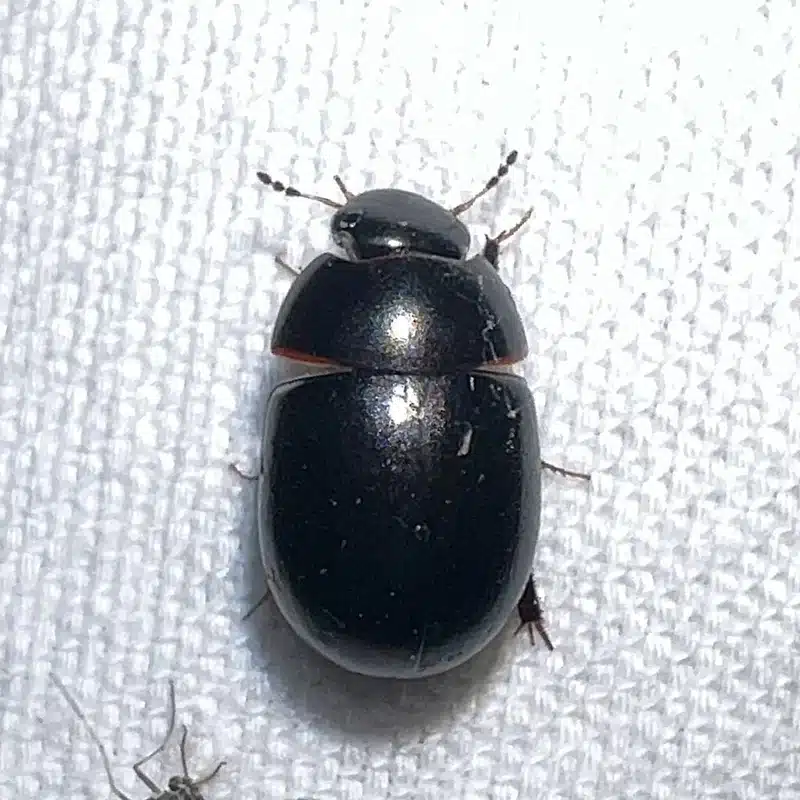Finding black ground beetles in your home can be concerning, especially when you’re not sure what they are or how they got inside. These common black beetles often catch homeowners off guard because they appear suddenly, particularly during warmer months. After working in the pest control industry for four years and seeing countless beetle issues throughout the DMV area, I’ve learned that understanding these insects is the first step to managing them effectively.
Understanding the Black Ground Beetle Pest
Ground beetles belong to the family Carabidae and represent one of the largest groups of beneficial insects in North America. These beetles range in size from small specimens measuring just half an inch to larger species reaching over 1 inch long. Most adult ground beetles display a dark coloration, with many appearing completely black, while others show metallic or iridescent highlights on their hard wing covers.
The anatomy of a ground beetle includes several distinctive features that help with identification. Their prominent mandibles serve as powerful jaws for capturing prey, while their long legs enable rapid movement across various surfaces. Additionally, these beetles possess clubbed antenna that help them navigate their environment, especially during nighttime hunting.
Key Features of Ground Beetles
When learning how to identify ground beetles, focus on their body structure and behavior patterns. These insects typically measure between half an inch to 1 inch in length, with an elongated oval body shape. Their wing cover often displays lengthwise grooves, and some species exhibit a reddish brown coloration mixed with their predominantly black appearance.
Ground beetles are active at night, which explains why homeowners often discover them near outdoor lighting or yellow light bulbs. During daylight hours, they hide during the day under mulch, loose bark, or other debris around your property’s perimeter.
Distinguishing Black Beetles: Ground Beetle vs Carpet Beetle
Many homeowners confuse ground beetles with more problematic species like carpet beetles or even cockroach nymphs. However, ground beetles move much faster than most household pests and don’t cause property damage. Unlike little black beetles that infest homes, ground beetles rarely establish populations indoors.
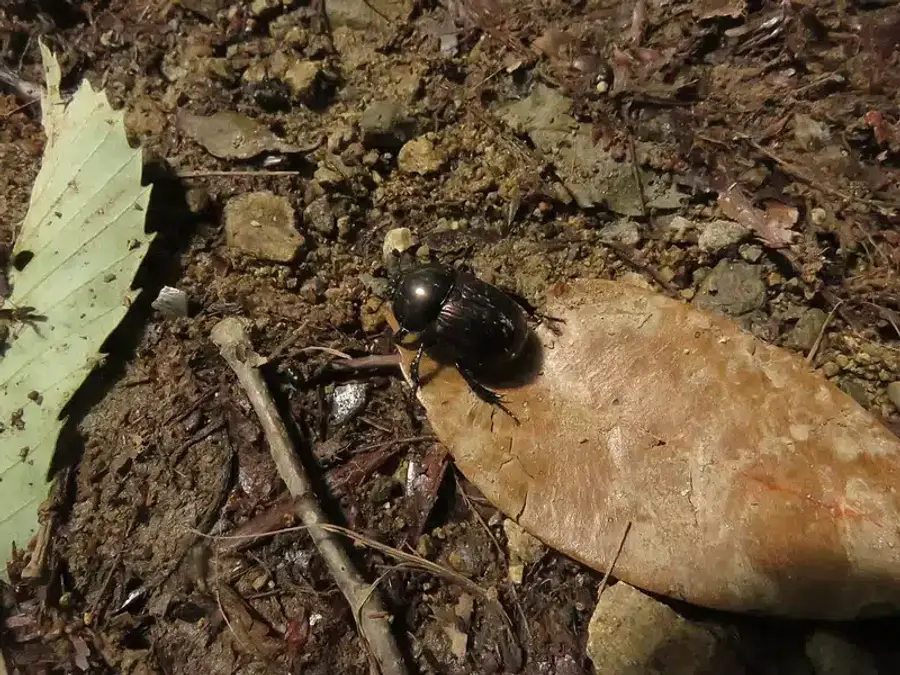
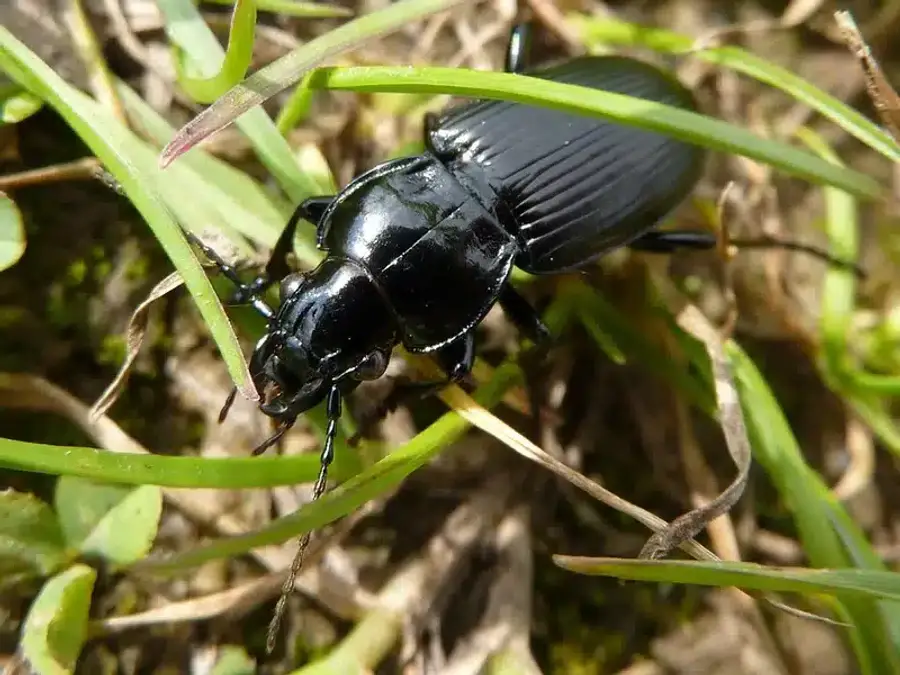

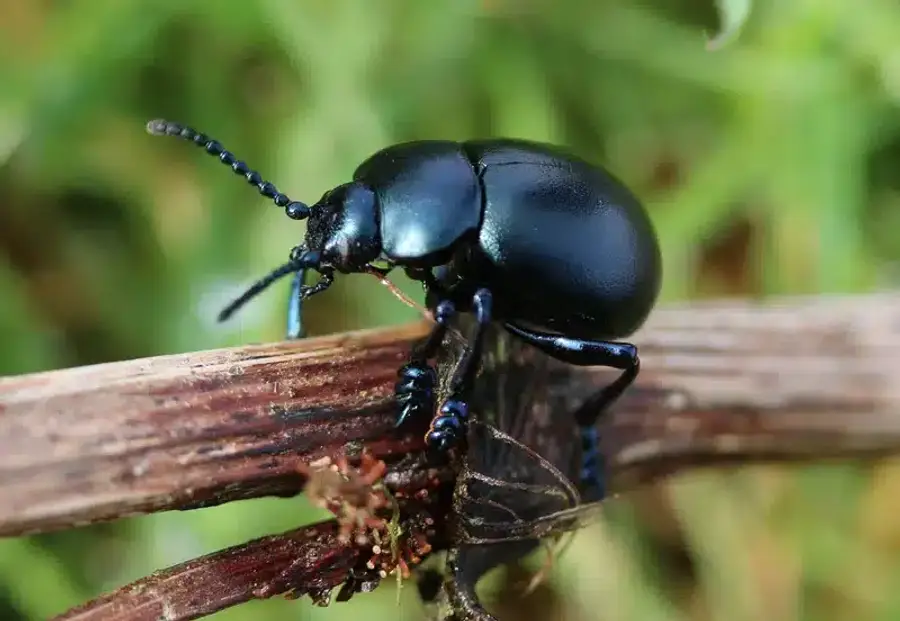
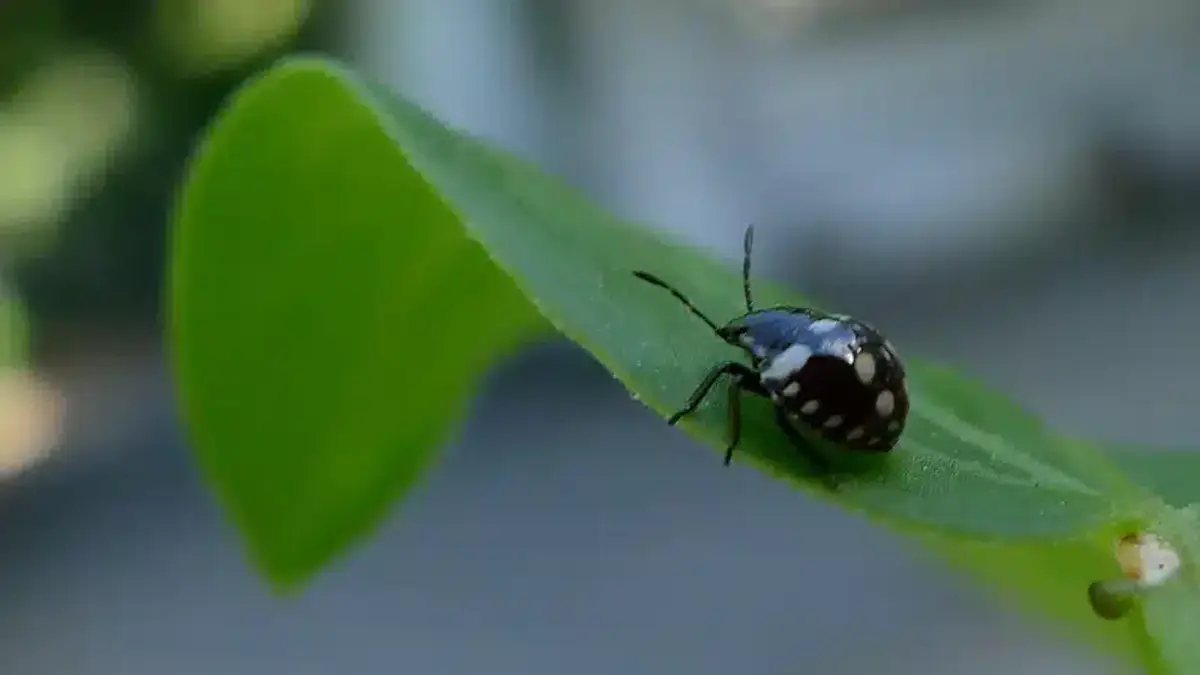
Carpet beetles, by contrast, are smaller and cause actual damage to fabrics and stored materials. Their larva feeds on natural fibers, while ground beetle larvae develop outdoors and prey on other insects.
Biology and Life Cycle of Ground Beetles
Understanding the complete life cycle helps explain why these beetles appear in certain seasons and locations. The ground beetle species found throughout the U.S. follow a similar developmental pattern, though timing varies based on climate and specific species requirements.
Egg, Larva, Pupa, and Adult Ground Beetle Stages
Female ground beetles lay their eggs in soil during spring and early summer months. The larval stage occurs in the soil, where young beetles feed on various invertebrate prey. This larval period can last several months, with the grub-like larvae molting multiple times before reaching maturity.
The pupal stage represents a transitional period where larvae transform into adults. After this transformation, newly emerged beetles begin their role as generalist predators, hunting for aphid populations, slug species, caterpillar stages, and other garden pests.
Nocturnal Behavior: Active at Night and Hide During the Day
Ground beetles are primarily nocturnal hunters that emerge as adults to search of prey during evening hours. This behavior explains why homeowners often find these beetles near bright white or yellow light bulbs, as outdoor lighting attracts the flying insects that ground beetles hunt.
During daylight, adult ground beetles seek shelter in moist areas around your property. They commonly hide under plant material, within crevice spaces, or beneath objects on the floor of gardens and landscaped areas.
Common Beetle and Ground Beetle Species in the U.S.
The diversity of ground beetle species across the United States is remarkable, with hundreds of different types adapted to various environments. In our region, several species regularly appear around homes, particularly during their peak activity periods.
Carabids: Beneficial Ground Beetle Species
Carabids represent the scientific classification for all ground beetles within the order Coleoptera. These beneficial insects serve as natural pest control agents, consuming thousands of harmful insects throughout their lifetime. Many species feed on snails, slugs, and various garden pests that damage plants.
Some common species display metallic sheens on their wing covers, while others appear uniformly black. The larger species, sometimes reaching 1 inch long, are particularly effective at controlling pest populations in gardens and landscaped areas.
Other Ground Beetle Species Found on the Ground
Beyond the typical carabid species, homeowners might encounter various other ground-dwelling beetles. Some appear reddish in color, while others show black spots or striped patterns. Each species plays a specific role in the local ecosystem, helping maintain balance among insect populations.
These beetles that may enter homes occasionally do so by accident rather than intent. They live outdoors naturally and don’t seek indoor environments for breeding or long-term shelter.
Identifying Black Ground Beetle Infestations Indoors
True ground beetle infestations indoors are extremely rare because these insects cannot complete their life cycle inside homes. What homeowners typically experience are occasional invaders that wander inside while searching for prey or shelter.
How to Identify and Control Ground Beetles in Homes
When ground beetles are found indoors, they usually appear as individual beetles rather than large groups. These beetles move quickly when disturbed and may emit a defensive secretion when handled. Unlike genuine household pests, they don’t cluster around food sources or establish breeding sites inside your home.
Signs that you’re dealing with ground beetles include finding fast-moving black bugs near doors, windows, or in basements. They often appear disoriented indoors and may be found dead near light sources after failing to find their way outside.
Signs of Adult Ground Beetles and Beetle Larvae Indoors
Adult ground beetles found indoors typically indicate entry through small openings around doors, windows, or foundation crevices. The beetle larvae, however, won’t be found inside homes because they require soil conditions for development. Unlike beetle larva that develop in stored products, ground beetle larvae live exclusively in outdoor soil environments.
If you’re finding multiple black beetles regularly, consider whether you might be dealing with a different species entirely. Carpet beetles can be dangerous to fabrics and require different treatment approaches than ground beetles.
Typical Beetle Habitats and Ground Beetle Entry Points
Ground beetles thrive in outdoor environments where moisture and prey are abundant. Understanding their preferred habitats helps explain why they sometimes venture close to homes and occasionally enter buildings.
Mulch, Loose Bark, and Moist Areas
Thick mulch layers around foundations create ideal ground beetle habitat because they provide moisture retention and shelter. These areas also attract the prey species that ground beetles hunt, including various larval stages of other insects. Additionally, loose bark on trees and accumulated yard debris offer perfect hiding spots during daylight hours.
Gardens with heavy plant material coverage naturally support larger ground beetle populations. While beneficial for pest control, these conditions can lead to higher numbers of beetles around your home’s outdoor perimeter.
Small Openings, Crevices, Perimeter, Doors, and Around Windows
Ground beetles typically enter buildings through potential entry points around the foundation, doors, and around windows. Gaps under doors, cracks in weatherstripping, and openings where utilities penetrate walls provide access routes for these mobile insects.
Treatment around the exterior becomes necessary when beetles regularly appear indoors. Sealing these small openings effectively reduces the likelihood of beetles finding their way inside while maintaining the beneficial beetle populations in your garden areas.
Risks and Concerns of Black Ground Beetles
Most homeowner concerns about ground beetles stem from misidentification or misunderstanding their behavior. These beneficial insects pose minimal risks but can become a nuisance under certain circumstances.
Are Black Ground Beetles Harmful?
Ground beetles are not harmful to humans, pets, or property in any meaningful way. Their prominent mandibles can deliver a minor pinch if handled roughly, but they rarely bite and cannot cause serious injury. The defensive secretion some species produce may irritate sensitive skin but causes no lasting effects.
Unlike pests that spread disease or cause structural damage, ground beetles actually benefit homeowners by controlling harmful insects in gardens and landscapes. Understanding beetle-related concerns helps distinguish between beneficial species and actual threats.
Nuisance Pest: When Black Beetles Become a Problem
Ground beetles become a nuisance when large numbers congregate around outdoor lighting or when weather conditions drive them to seek shelter near buildings. Heavy rains or extreme temperatures can cause temporary increases in beetle activity around homes.
The primary annoyance comes from their tendency to cluster around bright exterior lights and their habit of entering through open doors when attracted to indoor lighting. Simple adjustments to outdoor lighting can significantly reduce these issues.
Ground Beetle Prevention and Exclusion
Effective ground beetle management focuses on exclusion methods rather than elimination, since these beneficial insects serve important ecological functions. In my experience helping families throughout the DMV area, prevention works better than trying to eliminate established populations.
Sanitation: Removing Plant Material, Debris, and Mulch
Managing landscape conditions around your home’s perimeter reduces beetle activity near entry points. Pulling mulch back from foundation walls creates a dry zone that beetles find less attractive. Similarly, removing excess plant material and debris eliminates hiding spots close to your home.

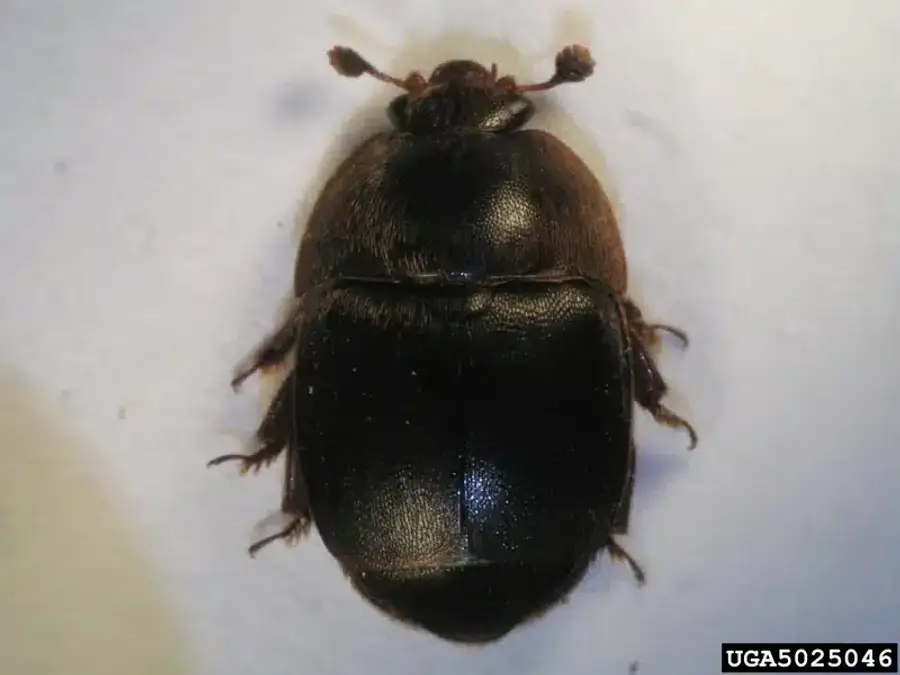
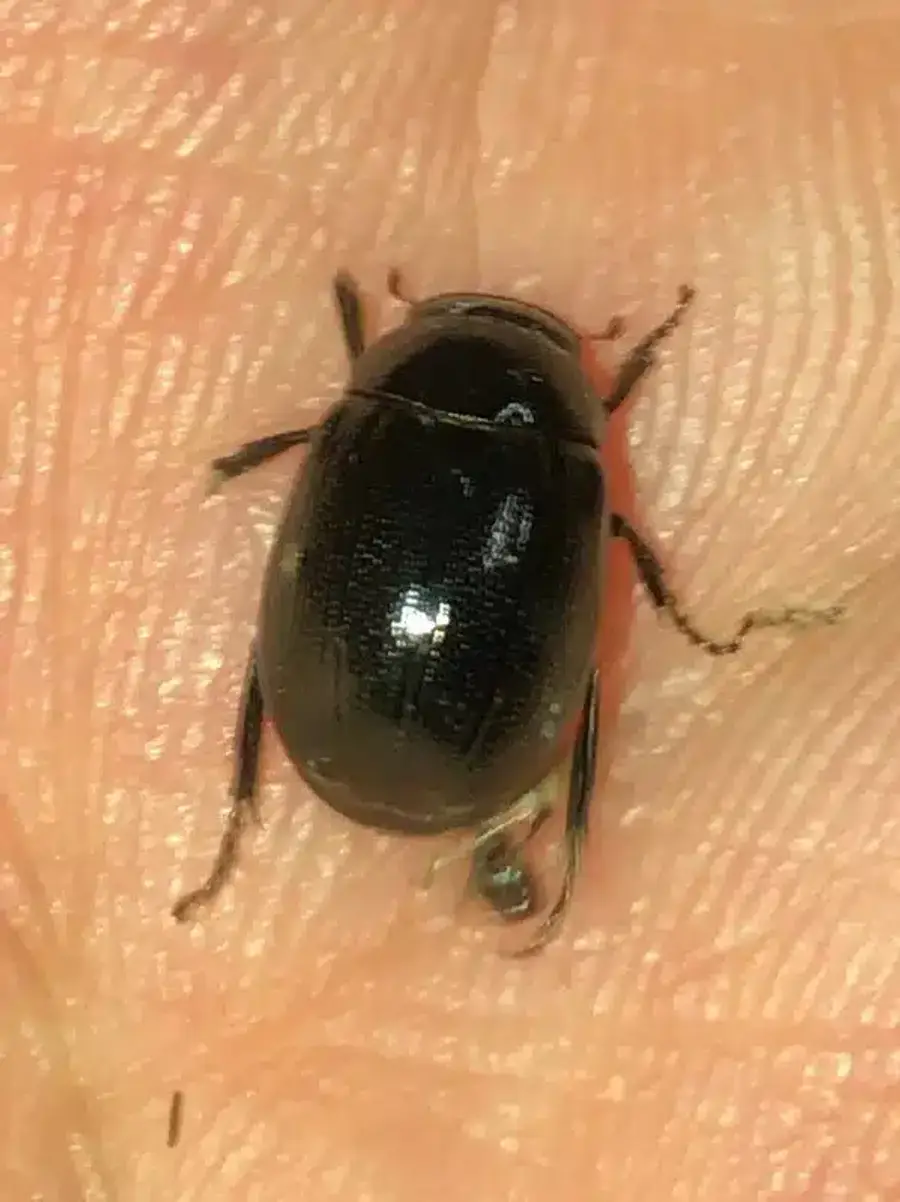
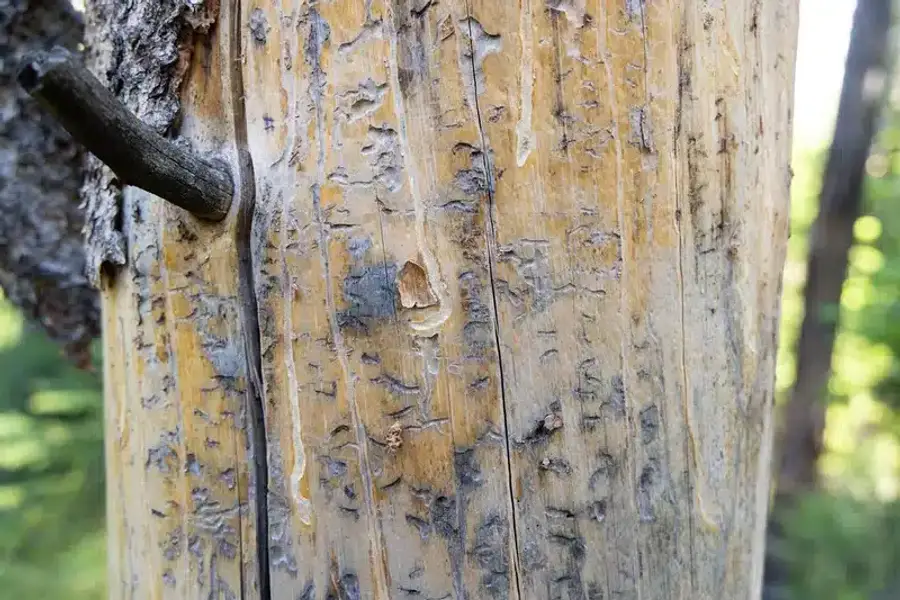
However, complete elimination of mulch and organic matter isn’t necessary or advisable. Maintaining a 12-18 inch clear zone around the foundation strikes a balance between pest management and garden health.
Sealing Gaps, Installing Screens, and Outdoor Perimeter Treatment
Physical exclusion provides the most effective long-term ground beetle control. Weather stripping around doors, screens on windows, and sealing utility penetrations prevent most beetle entry. Additionally, addressing moisture issues that attract beetles helps reduce their numbers near your home.
Professional perimeter treatment creates a barrier that discourages beetles from approaching entry points. This approach maintains beneficial beetle populations in garden areas while protecting your home’s interior.
When to Call a Professional Ground Beetle Pest Control Technician
Most ground beetle issues can be managed through simple exclusion and habitat modification. However, certain situations benefit from professional assessment and treatment.
Indicators for Expert Ground Beetle Control
Large numbers of beetles appearing regularly indoors suggests entry points that require professional identification and sealing. Additionally, recurring problems despite homeowner efforts indicate underlying conditions that need expert evaluation.
Professional services become particularly valuable when dealing with multiple pest species simultaneously. Understanding the signs of different beetle species helps determine whether you’re facing a complex pest situation requiring coordinated treatment.
Better Termite and Pest Control Services in DC, VA, and MD
Our family business has served the DMV region for over 50 years, developing expertise in local pest patterns and effective treatment strategies. Our registered technicians understand the difference between beneficial ground beetles and species requiring active management.
We provide comprehensive inspections that identify specific beetle species and underlying conditions contributing to pest activity. Our approach emphasizes education and long-term solutions rather than quick fixes that may disrupt beneficial insect populations.
Integrated Pest Management for Ground Beetles
Successful ground beetle management combines multiple strategies tailored to your specific situation. This comprehensive approach addresses immediate concerns while maintaining ecological balance on your property.
Combining Sanitation, Exclusion, and Insecticide Strategies
The most effective ground beetle control programs incorporate habitat modification, physical exclusion, and targeted treatments as needed. Sanitation removes attractants, exclusion prevents entry, and selective pesticide use addresses persistent problems.
This layered approach provides reliable results while preserving the beneficial aspects of ground beetle populations. Each component reinforces the others, creating comprehensive protection against unwanted indoor invasion.
Monitoring, Follow-Up, and The Better Promise
Ongoing monitoring helps determine treatment effectiveness and identifies new issues before they become significant problems. Regular inspections reveal changes in beetle activity and habitat conditions that might require attention.
Our service approach includes unlimited callbacks to address pest issues between scheduled visits. If ground beetles continue appearing indoors despite treatment, we’ll return to reassess and modify our approach until achieving acceptable results.
Whether you’re dealing with occasional ground beetle visitors or persistent pest issues, our experienced team can help develop an effective management strategy. We focus on solutions that work for your specific situation while respecting the beneficial role these insects play in local ecosystems.
Frequently Asked Questions
Are black ground beetles harmful?
+
Black ground beetles are not harmful to humans, pets, or property. These beneficial insects actually help control pest populations by feeding on harmful garden insects, slugs, and other invertebrates. While their prominent mandibles can deliver a minor pinch if handled roughly, they rarely bite humans and pose no serious threat. Their defensive secretion may cause minor skin irritation but produces no lasting effects.
Why are there black ground beetles in my house?
+
Ground beetles typically enter homes while searching for prey or when attracted to indoor lighting. They may also seek shelter during extreme weather conditions or when their outdoor habitat becomes disturbed. Common entry points include small openings around doors, around windows, and foundation cracks. Heavy mulch near your foundation, outdoor lighting, and moist areas around the perimeter can increase beetle activity near your home.
What are the black beetles in my soil?
+
The black beetles in your soil are most likely ground beetle larvae or adult ground beetles, which are beneficial predators. These carabid species live naturally in soil environments where they hunt other insects, grubs, and garden pests. Unlike harmful species, these soil-dwelling beetles help control pest populations and don't damage plants or property. Their presence typically indicates a healthy soil ecosystem with adequate moisture and organic matter.
What happens if a ground beetle bites you?
+
Ground beetle bites are extremely rare and typically occur only when the beetle is handled roughly or feels threatened. If a bite does occur, you might experience minor pain similar to a small pinch, possibly accompanied by slight redness or swelling at the bite site. The bite poses no serious health risks and requires no medical treatment beyond basic cleaning. Most people never experience ground beetle bites because these insects prefer to flee rather than fight when disturbed.
How can I prevent ground beetles from entering my home?
+
Prevention focuses on exclusion methods such as sealing gaps around doors and windows, installing proper weatherstripping, and addressing cracks in your foundation. Additionally, maintaining a 12-18 inch clear zone around your foundation by pulling back mulch and removing debris helps reduce beetle activity near entry points. Using yellow light bulbs or timing outdoor lighting can also minimize attraction to your home's exterior.
Do ground beetles damage property or gardens?
+
Ground beetles do not damage property, fabrics, stored food, or garden plants. Unlike destructive pests, these beneficial insects actually protect gardens by consuming harmful species such as aphids, caterpillars, slugs, and other garden pests. Adult ground beetles and their larvae serve as natural pest control agents, making them valuable allies for homeowners and gardeners.
When should I call a professional for ground beetle issues?
+
Consider professional help when large numbers of beetles appear regularly indoors despite your prevention efforts, or when you cannot identify the entry points they're using. Professional assessment becomes particularly important if you're unsure whether you're dealing with beneficial ground beetles or harmful pest species. Additionally, if beetles continue appearing after sealing obvious entry points, underlying conditions may require expert evaluation.
How long do ground beetles live and when are they most active?
+
Adult ground beetles can live several months to over a year, depending on the species and environmental conditions. They are most active during nighttime hours when they hunt for prey, which explains why they're often found near outdoor lighting. Peak activity typically occurs during warmer months, though specific timing varies by species and local climate conditions.
Can ground beetles fly into my house?
+
While many ground beetle species have wings under their hard wing covers, most are poor fliers and rarely take to the air. They typically enter homes by crawling through ground-level openings rather than flying. However, some species may occasionally fly toward bright lights, particularly during their peak activity periods in late spring and summer.
What attracts ground beetles to residential areas?
+
Ground beetles are attracted to areas with abundant prey, moisture, and shelter. Residential landscapes with mulch, gardens, outdoor lighting, and irrigated areas naturally support the insects that ground beetles hunt. While this creates beneficial pest control, it can also increase beetle activity around homes, particularly near foundations with dense vegetation or thick mulch layers.
With five years of hands-on experience in the pest control industry, George Schulz is a registered technician with the Virginia Pest Management Association and a proud third-generation professional in a family business that's been protecting homes for over 57 years. He manages and trains a team of service pros while also leading internal research efforts—recently spearheading a deep-dive review of thousands of documents on pest control materials to hand-pick the most kid and pet friendly, most effective solutions tailored specifically for homes in the DC metro area.
